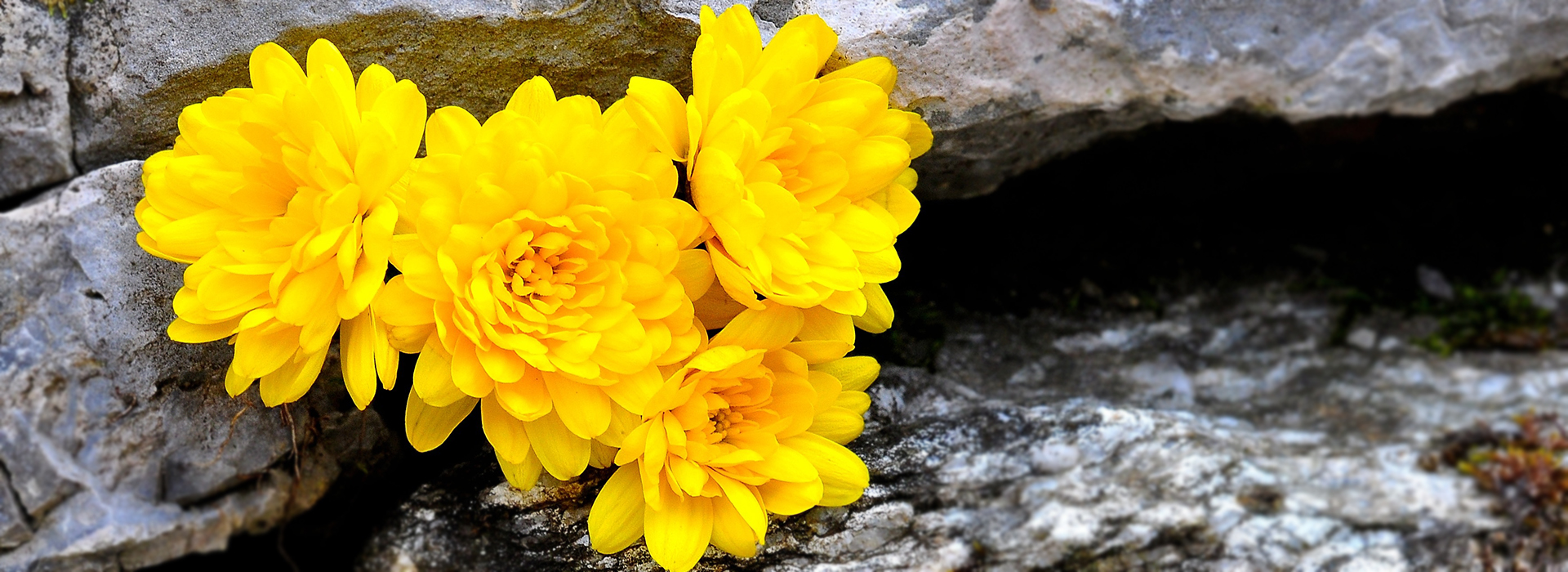
Flowers
BODHI ADMIN - Posted on August 9, 2019 - 12,407 Views
Flowers have always played an important role in human culture and are used for gastronomical, medicinal and aesthetic purposes. Prized for their beauty and fragrances, flowers had been given meaning and significance and are often prominent in religious traditions. In addition, in religious art, flowers are added to provide additional symbolic and decorative purposes.
Similarly, in Buddhist histories and cultures, flowers play important roles. The flower has been used as a simile to describe positive aspects; the flower has been used as a metaphor to explain Buddhist concepts (such as impermanence).
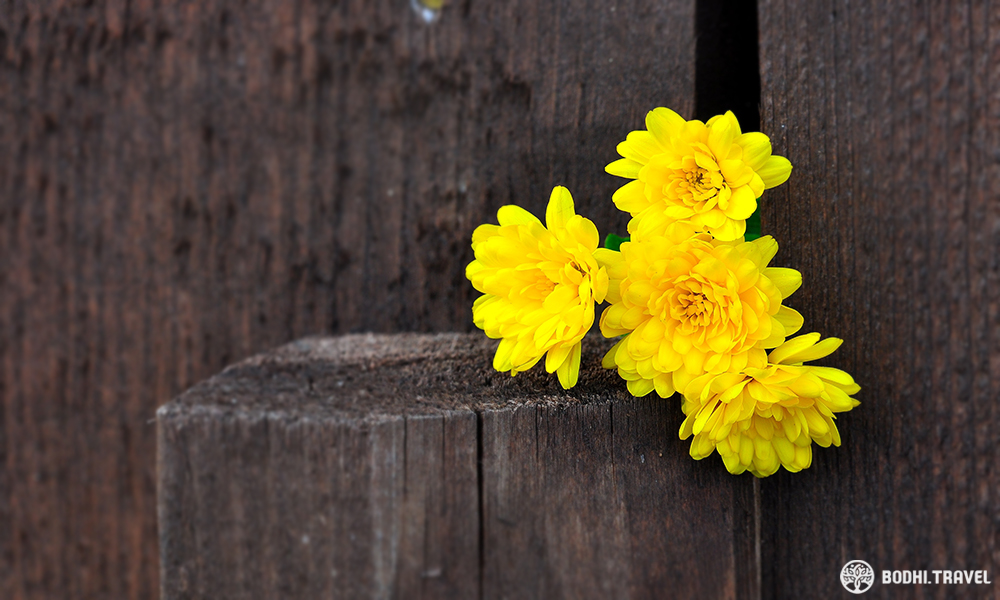
For example in the Dhammapada (verses 51 and 52), the Buddha equated a person who knows the Dharma but does not practice it as a beautiful flower with no fragrance.
Verse 51: Just as a beautiful flower, lacking in scent, cannot give the wearer the benefit of its scent, so also, the well-preached words of the Buddha cannot benefit one who does not practise the Dhamma.
Verse 52: Just as a flower, beautiful as well as fragrant, will give the wearer the benefit of its scent, so also, the well-preached words of the Buddha will benefit one who practises the Dhamma.
---------------
Obviously, there are countless varieties of flowers. The following are four commonly seen species of flowers seen in Buddhism.
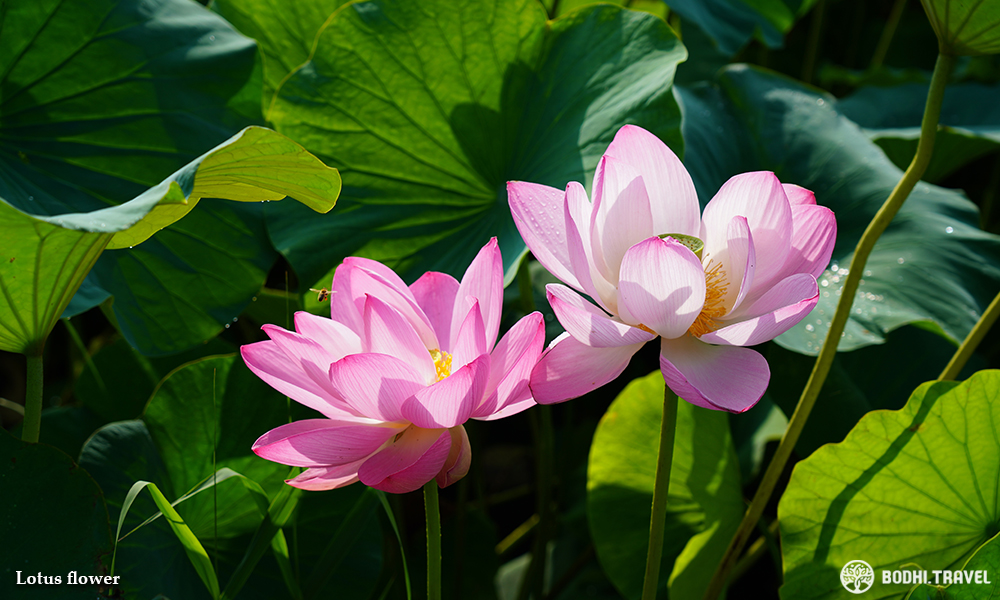
The Lotus (nelumbo nucifera)
We have covered the lotus in a previous entry. The Lotus is arguably the most significant flower in Buddhism due to the Buddha’s encouragement to all sentient beings to strive to be like the lotus and blossom in spite of our surroundings.
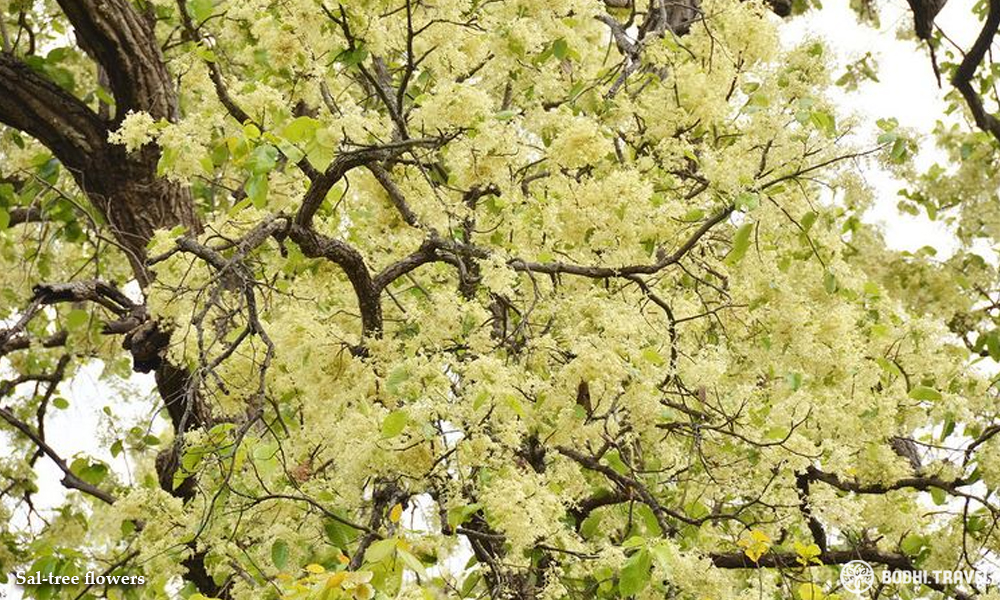
The Sal-trees (shorea robusta)
In Buddhist tradition, when Queen Maya was making her way home (to her matrimonial family) during her pregnancy, she stopped by Lumbini where she gave birth to Prince Siddhartha while grasping the branch of a sal-tree
In the Mahaparinibbana Sutra, it was stated that the Buddha was lying down and resting at the sal-grove near Kushinara while giving His final instructions to those present. During this event, the sal-trees bloomed and showered flowers upon the Buddha despite being out of season.
The majestic Lian Shan Shuang Lin Monastery in Singapore is named after the sal-trees. The “Shuang Lin” refers to the twin sal-tree that the Buddha laid in between as depicted in the Mahanibbana Sutra.
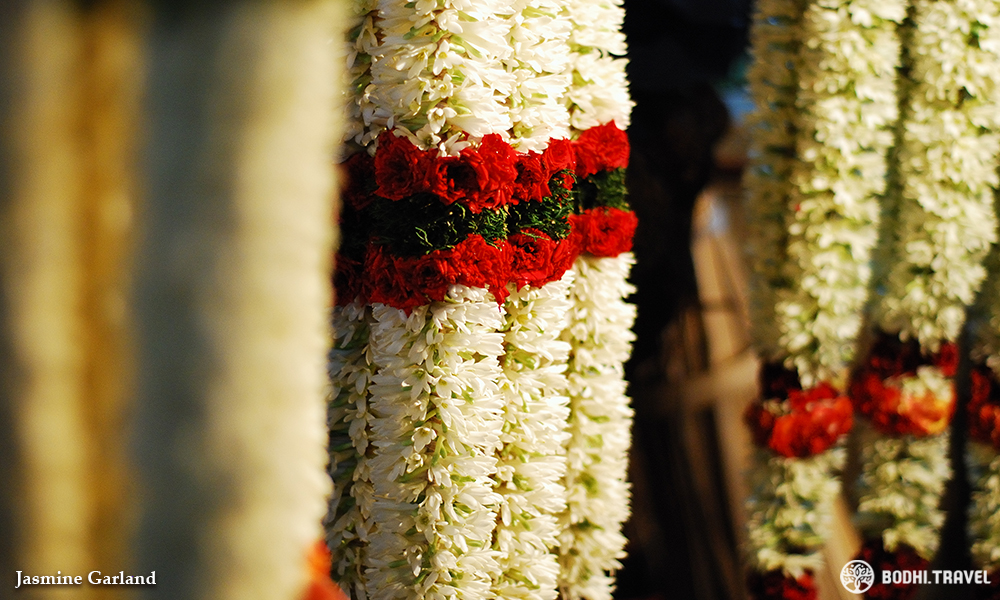
Jasmine (jasminum)
The Jasmine is a very popular flower due to its beauty and strong fragrance. Consumed as tea in some cultures, the jasmine is also used in marriages, religious ceremonies and festivals in many Asian cultures.
The Buddha was said to have remarked on the fragrance of the jasmine. In the Dhammapada (verse 54 and 55), the Buddha equated the reputation of a virtuous person to be similar to fragrant flowers and the good reputation will spread far and wide.
Verse 54: The scent of flowers cannot go against the wind; nor the scent of sandalwood, nor of rhododendron (tagara), nor of jasmin (mallika)2; only the reputation of good people can go against the wind. The reputation of the virtuous ones (sappurisa) is wafted abroad in all directions.
Verse 55: There are the scents of sandalwood, rhododendron, lotus and jasmin (vassika)3; but the scent of virtue surpasses all scents.
Today, the jasmine is also a common female name and is the national symbol for many countries.
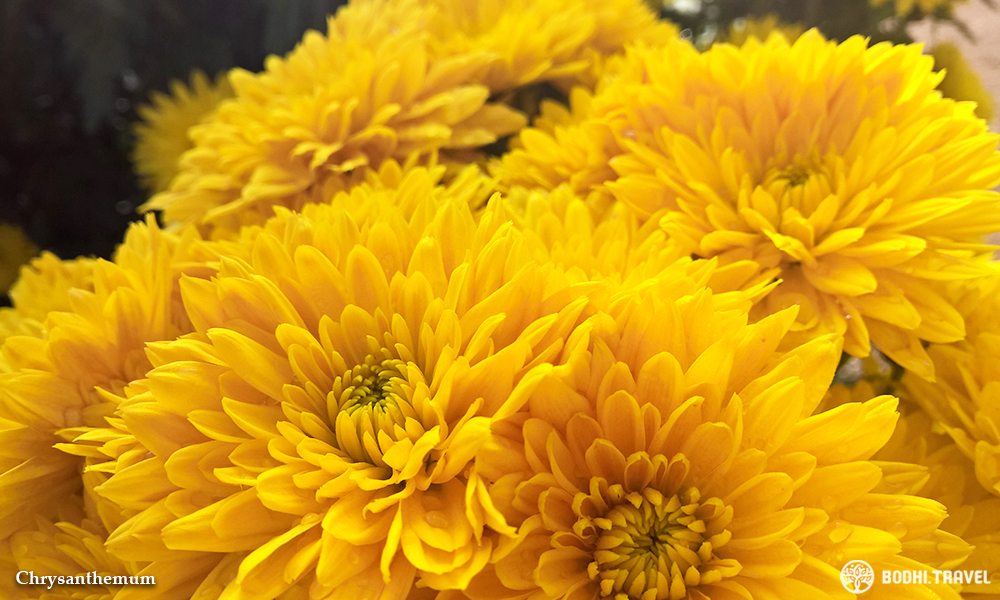
Chrysanthemum (Chrysanthemum morifolium)
The Chrysanthemum is a common flower used as offerings in Chinese, Japanese and Korean Buddhist temples. The Chrysanthemum has deep cultural significance in China and was believed to have been cultivated as early as 15th century BC.
It was said that the Chrysanthemum was introduced to Japan during the 8th century during a period of adoption of Chinese culture (including the acceptance of Buddhism). The Chrysanthemum was so popular with the royalty that the official imperial seal is the Chrysanthemum flower and the royal throne is known as the Chrysanthemum Throne.
Due to the popularity of the Chrysanthemum, it is a common flower used during flower offerings in Buddhist temples.
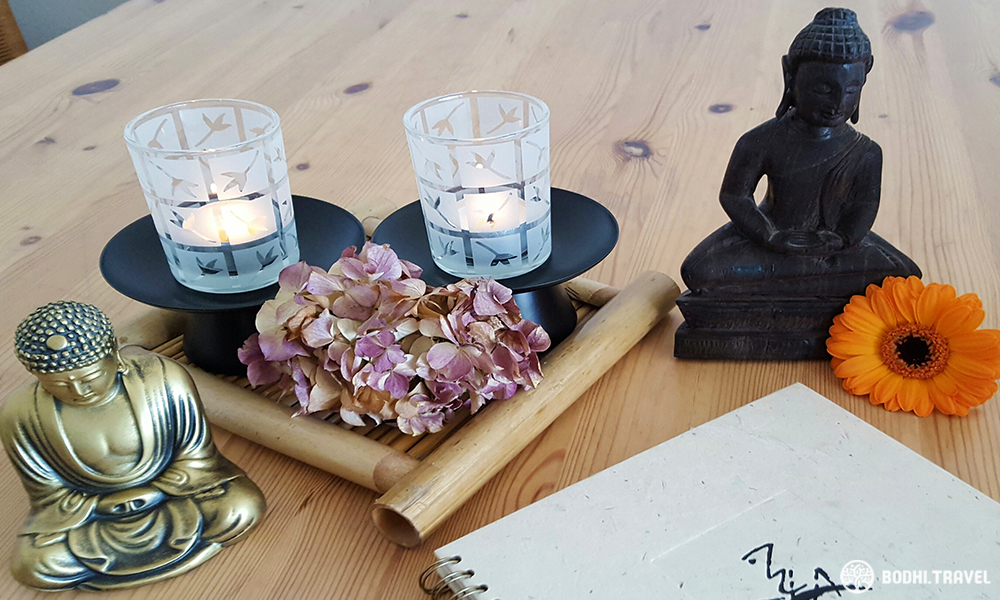
Chan Buddhism
A flower played an important role in the legend of the origin of the Chan (Zen) tradition. According to the legend, the Buddha was with an entourage of monks when He plucked a flower and smiled. Of all His disciples present during this incident, only Venerable Mahakasyapa (one of Buddha’s two chief disciple) smiled back. The reciprocating smile of the Venerable signifies the formless nature of the Truth and how wisdom is transmitted without words.
So the Buddha is the founder of the Chan tradition with Venerable Mahakasyapa as His successor. This incident is famously cited as “the Buddha plucked the flower, Mahakasyapa smiled in reciprocation” (师尊拈花,迦叶微笑) in Chinese Chan tradition.
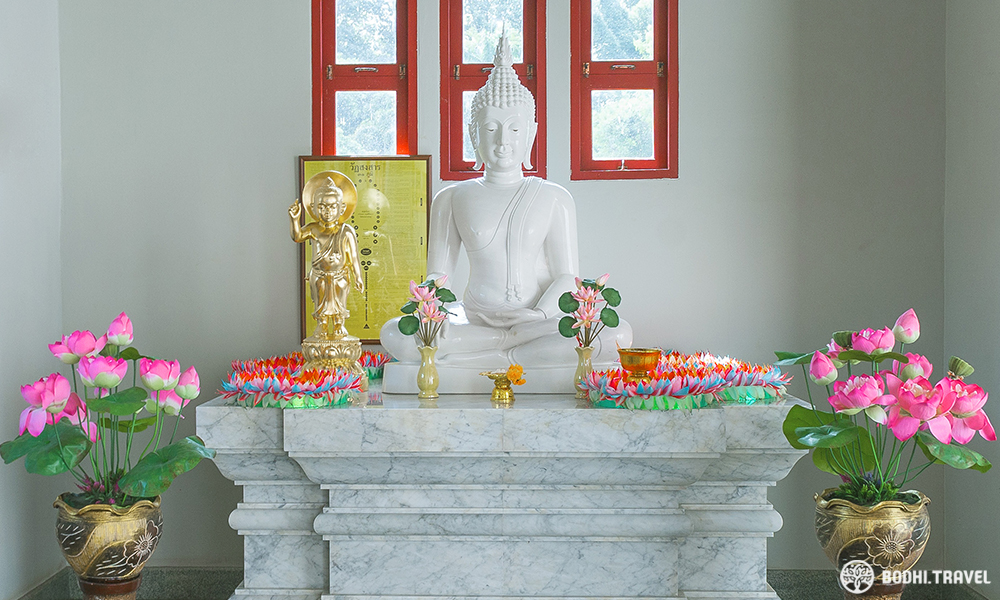
Buddhist Practices using Flowers
When a Buddhist makes flower offerings to the Buddha and Bodhisattvas, the flowers represent the truth of impermanence of all things and reminds the Buddhist to strive hard for the Truth. The flower meditation is a reflection impermanence. -- https://www.buddhanet.net/e-learning/buddhism/meditate/flower.htm
The following can also be recited during flower offerings
I pay reverence to every shrine
that may stand in any place,
the bodily relics, the Bodhi Tree,
and all images of the Buddha.
I have gained a vast mass of merit
honoring the most honorable Triple Gem;
by the spiritual power of that merit
may my obstacles be destroyed.
With candle lights dispelling dark
I venerate the perfect Buddha,
the light of the triple world,
who dispels the darkness of delusion.
With this incense sweetly scented,
made from fragrant substances,
I venerate the One worthy of reverence,
the supreme recipient of offerings.
This cluster of flowers,
beautiful, fragrant, and excellent,
I offer at the holy lotus feet
of the noble lord of sages.
With these flowers I venerate the Buddha,
by this merit may I gain liberation.
As these flowers fade and wither
so will my body be destroyed.
By this practice of Dhamma, in accord with the Dhamma, I venerate the Buddha.
By this practice of Dhamma, in accord with the Dhamma, I venerate the Dhamma.
By this practice of Dhamma, in accord with the Dhamma, I venerate the Sangha.
-- https://www.buddhanet.net/e-learning/history/devotion/devotion11.htm
MORE ARTICLES: Breathtaking Himalayas - Sikkim Part 2
MORE ARTICLES: Mudras – Dhammacakra




